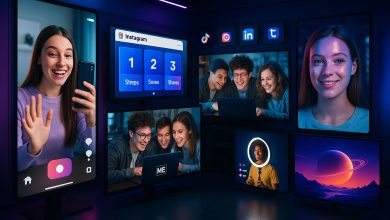Google Unveils Veo 3: The Next Generation of AI-Powered Video Creation

In a major announcement during its Google I/O event, Google introduced Veo 3, the latest evolution of its AI-powered video generation model. Developed by Google DeepMind, Veo 3 is positioned to be a game-changer in the world of content creation — offering filmmakers, marketers, educators, and creators the ability to turn simple text prompts into cinematic-quality video with minimal effort.
This innovation places Google at the forefront of the generative AI video race, alongside other tech giants like OpenAI and Meta.
What is Veo 3?
Veo 3 is an advanced text-to-video generation model that uses deep learning to interpret written descriptions and convert them into fully-rendered video clips. The model boasts improved visual fidelity, motion consistency, and the ability to generate longer, more coherent scenes than previous iterations.
For example, a prompt like “a drone shot flying over a foggy forest at sunrise” would result in a realistic, multi-second video complete with appropriate lighting, motion dynamics, and natural atmospheric effects.
Key Capabilities of Veo 3
- High-Quality Video Outputs
Veo 3 can produce videos in 1080p resolution with advanced rendering of textures, light, shadows, and camera motion — making the visuals suitable for professional use. - Longer Scene Duration
Earlier video AI models were limited to a few seconds. Veo 3 significantly improves the length and continuity of generated scenes, enabling more natural storytelling. - Cinematic Control
Creators can define:- Camera angles and movements (e.g., “steady cam,” “aerial view”)
- Visual styles (e.g., “animated,” “realistic,” “film noir”)
- Emotional tone and pacing (e.g., “slow and dramatic,” “fast and energetic”)
- Sketch-to-Video Support (expected)
Veo 3 is rumored to also support drawing-based input in future versions, where users can provide storyboards or rough sketches that the AI uses as visual reference. - Multi-Scene Video Generation
Unlike earlier models that rendered isolated moments, Veo 3 aims to allow linked scenes, enabling users to generate short films or sequences from a single prompt or script.
How It Works
Veo 3 is trained on a massive dataset of video clips, cinematic techniques, and visual storytelling patterns. The model uses multimodal learning to understand the relationship between language, motion, and visual composition, and then renders pixel-level details frame by frame.
To generate a video:
- The user inputs a detailed text prompt.
- Veo processes the semantic meaning and retrieves motion and visual context.
- The AI renders frames in a consistent sequence with dynamic lighting and camera logic.
Availability and Integration
As of now, Veo 3 is not publicly available but is being tested by a small group of creators and researchers via VideoFX, Google’s experimental AI video platform. Public access is expected to expand in the coming months.
Google has also hinted at integration with:
- YouTube Shorts (for creator-generated video content)
- Google Workspace tools (potentially for presentations, training content)
- Google Photos (to auto-generate memories or visual stories)
Privacy, Ethics & Transparency
Google has emphasized that every AI-generated video will include metadata and watermarks to distinguish it from real footage. This is part of its ongoing commitment to responsible AI development and mitigating risks like misinformation or content misuse.
Google also noted that Veo 3 was designed with editorial control in mind, allowing users to edit, refine, or reject generated content rather than relying on the AI’s first draft.
How Veo 3 Compares to Competitors
| Feature | Veo 3 (Google) | Sora (OpenAI) | Runway Gen-3 (Runway ML) |
|---|---|---|---|
| Resolution Support | Up to 1080p | 1080p (announced) | 720p–1080p |
| Scene Length | Multi-scene support | Up to 60 seconds | Short clips |
| Prompt Input Types | Text (visual, style) | Text (action-heavy) | Text/image input |
| Cinematic Control | Advanced | Moderate | Moderate |
| Availability | Private via VideoFX | Private waitlist | Public (limited) |
Conclusion: A Leap Toward Democratizing Filmmaking
Veo 3 may not be fully open to the public yet, but it represents a powerful step toward democratizing video creation. From marketing teams and educators to indie filmmakers and influencers, the ability to create detailed visual stories using only language is poised to revolutionize how we communicate through video.
With future updates and integrations, Veo 3 could redefine not only content production — but also what’s possible for creators with zero editing experience and a powerful idea.
Stay tuned for broader access and more features as Google rolls out Veo 3 later this year.



